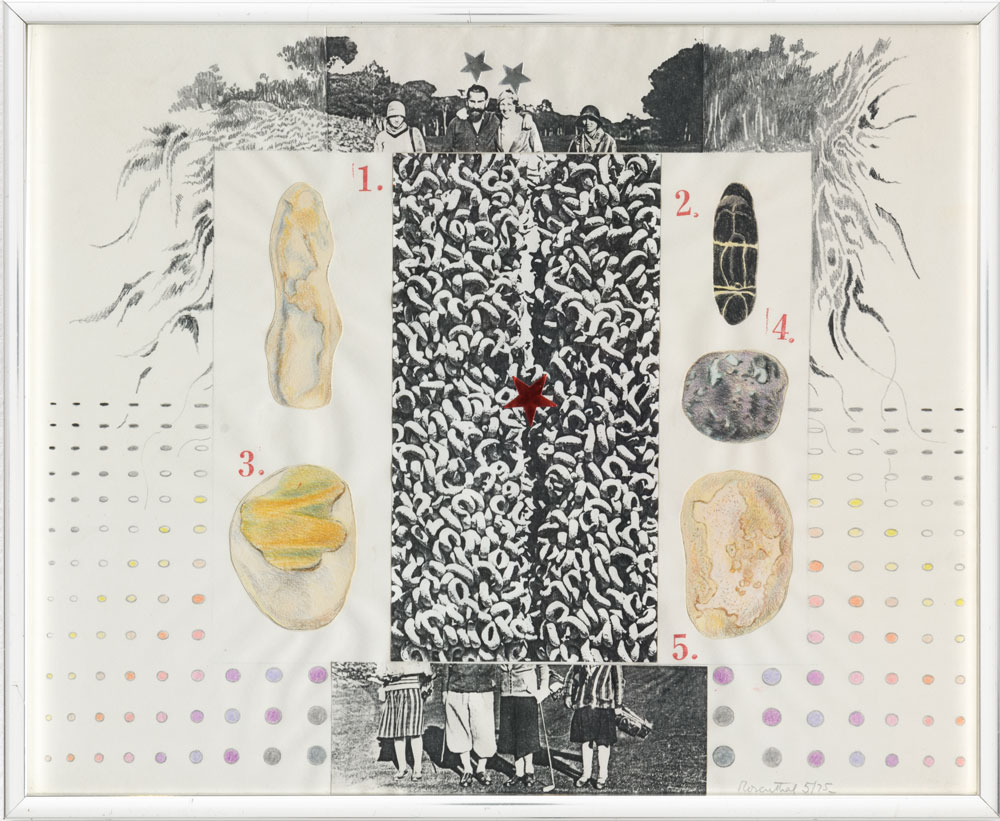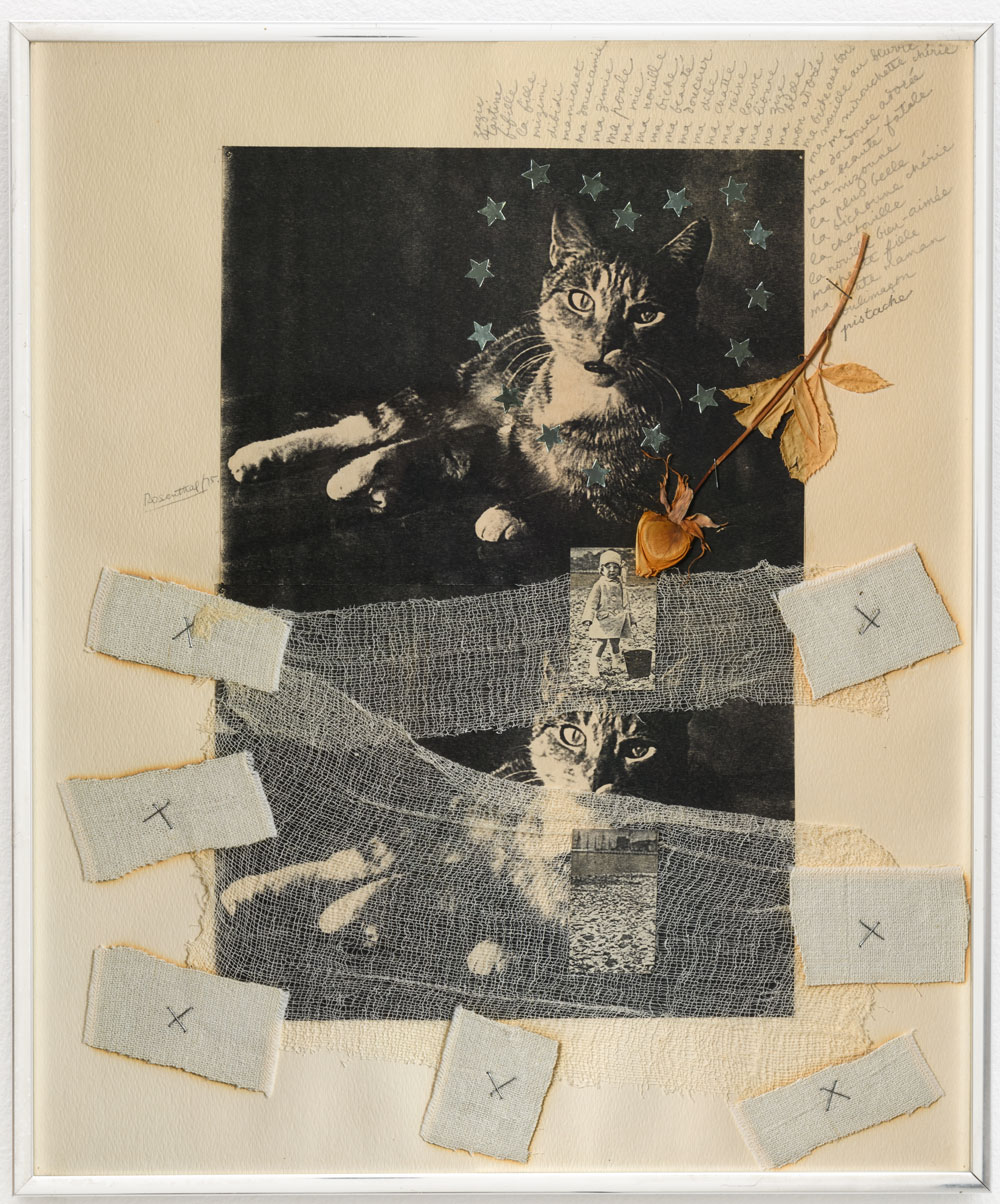Your cart is currently empty!
Rachel Rosenthal Roberts Projects

While Rachel Rosenthal is best known for her performance work, the collage works on display in “Thanks: Collage Works from the 1970s,” with their aged surfaces and intersecting themes, reveal an artist whose force of sentiment is firmly grounded and luxuriously generous. Performed in an elaborate ritual where an audience was gathered and, one after another, selected members were given a lit taper and provided with a reason for the artist’s gratitude, “Thanks” restored an order that was up until then an open account.
The collages are about relationships between the artist and others including family, they are reflections on her own life with its displacement and encounters and they are about working on a paper surface with the lines, gestures and mark-making derived from the moment of art that she was living.
The collage, 5 Decades (1975), is both a birthday card to herself marking off 50 years as well as an enigma, possibly an attempt at crystal divination. A photo-based image of three women and a man standing for a portrait with golf clubs is split horizontally keeping their feet firmly resting at the bottom of the vertical sheet, while the four torsos and heads are at the top of the sheet. Above the heads, two upside-down five-pointed stars are drawn. In between is a tangle of linear elements looking like noodled threads with a red star in the center. On either side of this textured column are a series of carefully drawn and numbered minerals or rocks, almost as though they were specimens in a collection. While the narrative may not be immediately clear, the intimate and thoughtful delineation of the relationships with the images within is palpable, like a magic spell.

In another work from the series, “MARA,” 1975, a faded and dated image of a woman is centered; around the outside of the extended rectangular page a garland of hair has been affixed. Within the bounds of the page, a flurry of crosshatched and smudged lines build up an atmosphere without ever coalescing into an image. Whoever the artist is portraying, it is clearly someone that inspires strong feelings. For anyone familiar with Rosenthal’s characteristically shaved head, the importance of hair is obvious, and the sacrifice of cutting and then offering it an important symbolic gesture.
Rachel Rosenthal is best known for her work in performance and as a leading figure in the LA women’s art movement, but she has also worked in the visual arts, in animal rescue, and as a community organizer. “Thanks” provides viewers with a chance to look beyond her work as a performer and begin to see the breadth of her poetic reach.